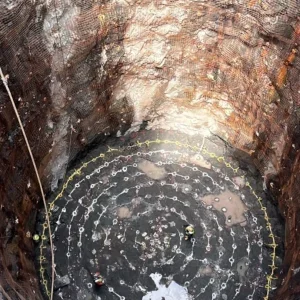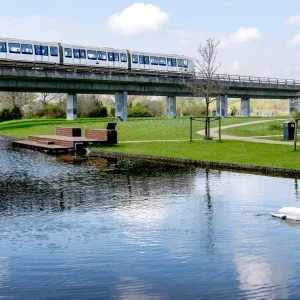Boreholes are being drilled for the pipes that will house power, water and fibre optic cable for communications across three of the Snowy 2.0 sites.
HDD is being used to drill 2.2km-long boreholes from Lobs Hole to Marica. The holes are initially 300mm in diameter and have an elevation difference of 650m.

Two drilling operations are under way from top and bottom and will join up to create a continuous borehole before being enlarged to 660mm in diameter.
Snowy 2.0 Lobs Hole construction manager Will Binsted said the drilling required a high level of skill to maintain directional control while operating a drill string up to 1.8km long. Snowy 2.0 has contracted HDD company Michels for the project.
The boreholes eliminate the need to build around 5km of roads and excavate up to 60m cuts in the steep terrain, helping minimise environmental impacts.
HDD techniques will also be used to take services under the Snowy Mountains Highway and waterways across the plateau through to the Tantangara worksite.
At Marica, the 28m-diameter headrace surge shaft is now one-fifth of the way to its final depth of 263m and drill and blast activities have started. Two 25-tonne capacity hoisting buckets, or kibbles, are being used to load excavated rock.
With the shaft now more than 50m deep, an integrated work platform and personnel hoist is being installed to provide worker access. Ventilation ducts have also been installed.
At Talbingo, tunnelling of the tailrace adit is complete. TBM Lady Eileen Hudson is now excavating the tailrace tunnel alignment and heading towards the power station complex. This marks the start of the first power waterway on the Snowy 2.0 project.
“Excavation is ahead of schedule, with more than 26m recently excavated in a single day. The tailrace tunnel is 6km in length, with TBM excavation continuing through to mid-2025,” said Binsted.
Snowy 2.0 is the largest renewable energy project under construction in Australia and will provide deep storage central to Australia’s renewable transition. When complete, it will deliver 2,200MW of dispatchable generation. The target date for commercial operation of all units is December 2028, with first power expected in the second half of 2027.







